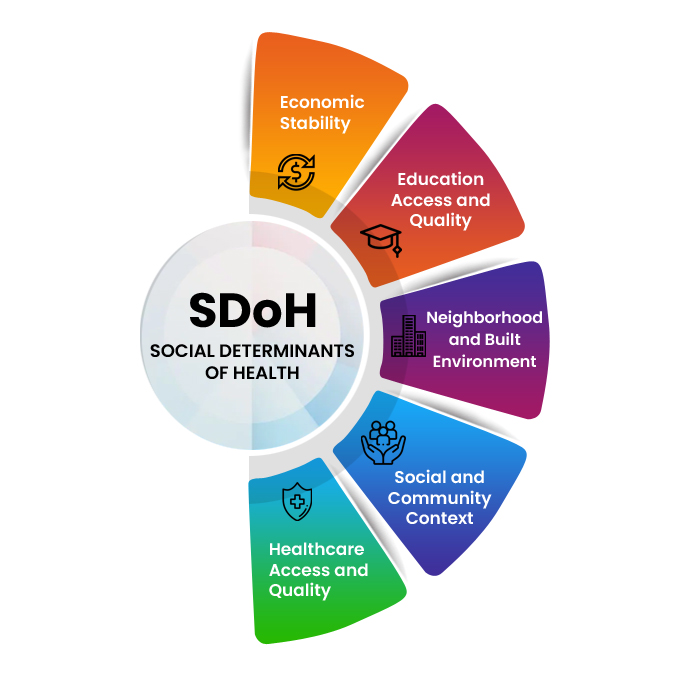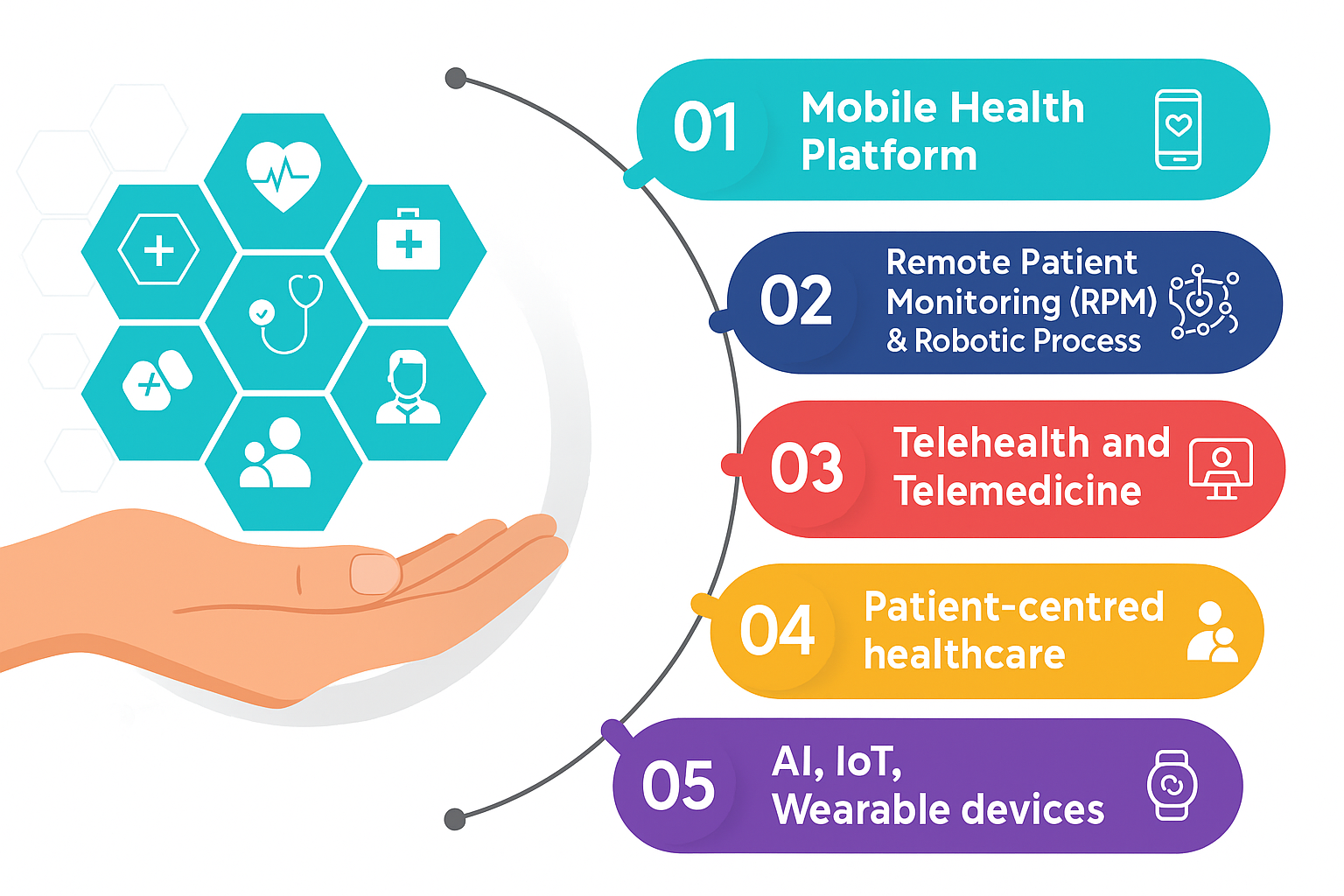· 7 min read
Social Determinants of Health Data Standards: The Building Blocks for Enhanced Care
SQuality data around SDoH is necessary to accurately identify, act on, and measure social risks, needs, and health disparities. Additionally, it is essential to formulate a common standard for SDoH information exchange and to use interoperable, standardized data to represent SDoH.

“Accurate data enables us to identify disparities and gaps and aids in the creation of evidence-based policies that meet the needs of the communities we serve” -April 2023 CMS National Stakeholder Call
Introduction
Social risk factors may have a significant impact on health, as studies indicate that social determinants of health may influence up to 50% of the variation in health outcomes at the county level in the U.S. Healthcare organizations are collecting information on social risks at an increasing rate, but a lack of SDoH data standards hinders their ability to leverage the data for health equity.
According to a 2023 survey by the American Health Information Management Association, nearly eight in ten healthcare organizations report collecting SDoH data. However, a lot of challenges were reported by organizations in relation to collecting, coding, and using the data.
With these challenges and answering this big question:
How SDoH data is exchanged to achieve health equity?
office of the ONC, National Coordinator for Health Information Technology, of the U.S. Department of Health and Human Services, takes an equity-by-design approach and published Social Determinants of Health Information Exchange Toolkit – Foundational Elements for Communities, a resource to support communities working toward achieving health equity through SDoH information exchange and the use of interoperable, standardized data to represent SDoH.
The Role of Health IT in SDoH
Integrating SDoH data into healthcare systems is crucial but presents technical challenges. Health information technology promises to streamline the sharing of SDoH data with community service providers, although achieving interoperability is a challenging task. The pandemic has increased the urgency of the efforts toward the same, as integrated data exchange is an important component of effective crisis management and improvement in health.
National Initiatives and Strategic Plans
National initiatives, such as the draft 2020-2025 Federal Strategic Plan for Health IT, emphasize integrating SDoH data into health IT infrastructure. The plan encourages healthcare providers to integrate SDoH data into electronic health records (EHRs), ensuring better communication, shared decision-making, and population health initiatives. The U.S. Department of Health and Human Services (HHS) and its Office of the Chief Technology Officer (CTO) have also emphasized the use of SDoH data to predict and address health crises like COVID-19.
Standardizing SDoH Data Collection
Before SDoH data can be effectively exchanged, there must be consensus on which data to collect and how to represent it. The Gravity Project, launched in 2018, aims to establish standard terminologies and data elements for SDoH. This initiative seeks to bridge gaps in existing clinical terminologies like LOINC and SNOMED CT and ensure that data is relevant and usable across the healthcare industry.
The Interoperability Standards Advisory (ISA)
The Office of the National Coordinator for Health Information Technology (ONC) maintains the Interoperability Standards Advisory (ISA), which identifies recognized standards for interoperability. The latest ISA version, influenced by the Gravity Project, includes standards for various social, psychological, and behavioral data. These standards are expected to be incorporated into the United States Core Data for Interoperability (USCDI) and EHR certification processes, as mandated by the ONC Cures Act Final Rule.
The Future of SDoH Data Interoperability
The Gravity Project and other initiatives, such as the PACIO Project and DaVinci Project, are advancing the technical aspects of SDoH data exchange. By leveraging HL7® Fast Health Interoperability Resource (FHIR®) standards, these projects aim to integrate SDoH data into clinical workflows, enabling comprehensive care planning and coordination. For example, SDoH data can enhance chronic disease management and support seamless information sharing with payers and health plans.
Challenges and Future Directions
Integration of SDoH data standards spurs innovative patient empowerment, community support, and data aggregation for population health. As the world continues to face new health crises, these SDoH data will be critical in guiding resources and infrastructure to support the most impacted communities.
With foundational SDoH data standards in place, the healthcare industry is set for a new wave of innovations that connect the broader health ecosystem. Key to success for many initiatives is alignment of incentives for stakeholders and patient engagement with new technologies and standards. As we further develop these tools, measures, and data representation standards, the healthcare community stands positioned to make SDoH data work for better care coordination and health outcomes for each community.
HL7 are Driving SDoH Data Standards
“The Regenstrief Foundation has committed $4.4 million toward an expanded partnership with the HL7 Gravity Project to create SDoH data standards.”
The HL7 Gravity Project is a milestone toward the integration of social determinants of health into mainstream healthcare practices. The project aims to standardize data collection and exchange of SDoH to create a more holistic approach toward patient care that acknowledges and addresses the social determinants of health. Not only does the project enhance the health outcomes of individual patients but also contributes toward broadened public health improvements and healthcare system efficiencies.
Overview of the HL7 Gravity Project
The Gravity Project was initiated in 2019 and is sponsored by the Social Interventions Research and Evaluation Network (SIREN) at the University of California, San Francisco. The project functions under Health Level Seven International (HL7), a global authority on standards for the exchange, integration, sharing, and retrieval of electronic health information.
The Gravity Project is a national public-private collaborative that creates consensus-based data standards for SDoH interoperability across the health, social services, public health, and research sectors. The community includes over 2,500 stakeholders in healthcare, health IT, payers, community-based organizations, government agencies, and research institutions.
Objectives and Goals
The main goals of the Gravity Project are:
- Identification and Harmonization of SDoH Data Elements: to standardize the terminologies for SDoH across various domains such as food security, housing stability, and transportation.
- Development of FHIR Implementation Guides: to create Fast Healthcare Interoperability Resources (FHIR) implementation guides that allow for the use and exchange of SDoH data within healthcare systems.
- Promotion of Adoption: Encourage the widespread adoption of these standards by healthcare providers, payers, and community-based organizations.
Key Components
Terminology and Coding: The project focuses on developing a standardized set of codes and terms for documenting SDoH. This includes creating value sets for specific SDoH domains.
- Example: For food insecurity, terms might include “lack of access to sufficient food” or “inability to afford balanced meals.”
Data Collection and Exchange Standards: Establish collection, storage, and sharing SDoH data according to the framework of FHIR.
- Example: A standard EHR for a patient would capture his housing stability using standardized fields that allow seamless exchange of data between different healthcare providers.
Implementation Guides: Detail how these standards can be implemented to ensure SDoH data can be integrated and utilized effectively within healthcare systems
- Example: A FHIR implementation guide may indicate the need for data elements and protocols of data exchange necessary in recording and sharing a patient’s transportation needs.
Why is the Gravity Project Important?
The Gravity Project is important because it has a definite potential of transforming the health delivery system by recognizing and taking into account social factors that hugely affect health outcomes. Standardizing SDoH data aids in:
• Better Care Coordination: All healthcare providers with access to complete, standard SDoH information will improve coordination of care to better patient outcomes.
• Better Analytics: Standardized data permits better analytics and research in understanding how the social factors have an impact on health; such understanding can provide support to target interventions better.
• Support Value-Based Care: Integrating SDoH data into care practice is in line with value-based care models that focus on patient outcomes through lower healthcare costs by taking care of the underlying social need.




